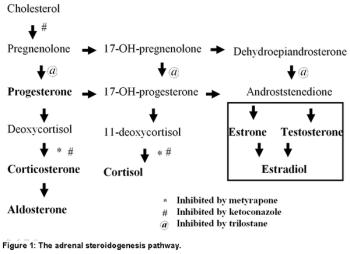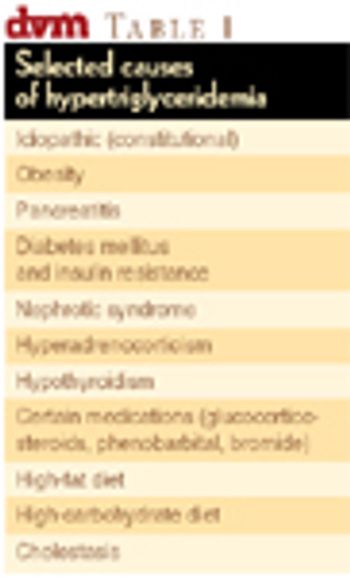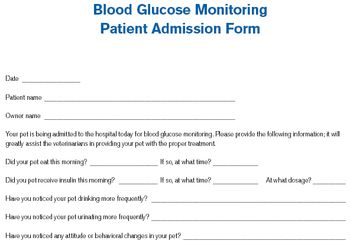
Hyperthyroidism is caused by excessive production of thyroxine (T4) and triiodothyroxine (T3).

Hyperthyroidism is caused by excessive production of thyroxine (T4) and triiodothyroxine (T3).

Type I diabetes is characterized by lack of insulin production by the pancreatic beta cells of the islets of Langerhans.

Few diseases are as frustrating for a veterinarian as diabetes mellitus. Realistically, control of hyperglycemia is rarely accomplished, and clinical signs of diabetes often persist.

Today's feline practitioners are well-versed in the pathophysiology, diagnosis, and treatment of hyperthyroidism.

Cats are true carnivores and as such have a metabolism specifically adapted to high protein meals.

A 14 year old, male intact, DSH cat is presented for acute onset of blindness. There are no other striking historical findings.

The past decade has seen a revolution in our understanding of adipose tissue.

When hyperthyroidism was first reported in cats as a disease entity approximately 25 years ago, the majority of cases were advanced.

Clinical signs of hypercalcemia can be difficult to detect.

None of the tests for hyperadrenocorticism (HAC) in dogs are perfect.

Authors almost always refer to hypothyroidism as a common (if not the most common) endocrine disease in dogs.

Only in the past decade has pancreatitis even been well-recognized in cats.

Diabetes mellitus is the second most common endocrine disorder in cats, with an estimated incidence of 0.5% (1 in 200-250 cats).

Hypertriglyceridemia refers to a fasting plasma triglyceride measurement that is increased, typically above the 95th percentile for age and animal species. Hypertriglyceridemia can be divided into primary and secondary forms.

The point of interest in this case was not the disease, but the degree to which it caused an elevated calcium concentration.

Please review management of difficult-to-regulate diabetic cats.

Dr. David Bruyette discusses how to administer and monitor trilostane in dogs with hyperadrenocorticism, including whether to switch affected patients from mitotane to trilostane.

Hypoadrenocorticism, or Addison's disease, results from failure of the adrenal glands to secrete glucocorticoids (primarily cortisol) and mineralocorticoids (primarily aldosterone).

Two things you may not know about canine Addison's disease: A history of weight loss or hypoglycemia may precede the typical electrolyte abnormalities, and DOCP can be administered immediately in dogs that may be having an addisonian crisis.

Dr. David Bruyette discusses recent changes in the availability of insulin products.

Dr. David S. Bruyette describes how to handle cats in this situation.

When we admit patients for blood glucose monitoring, we ask clients to fill out this form.

Increased ACTH secretion from the pituitary gland is the most commonly recognized cause of canine hyperadrenocorticism (HAC).

Hyperadrenocorticism is a common and complex clinical condition in the pet ferret.

Information on thyroid function, pituitary pars intermedia dysfunction, and equine metabolic syndrome in horses.